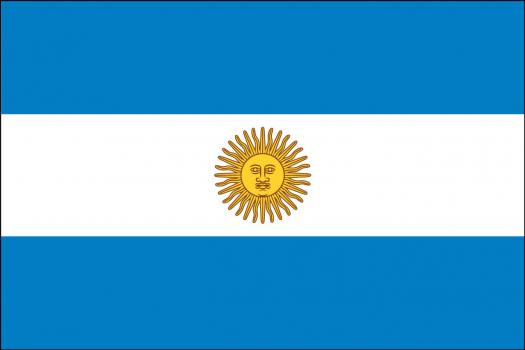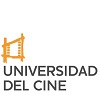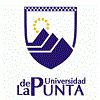
Estudia Animación 3D para Videojuegos en IMAGE CAMPUS, Tecnicatura Superior, Carrera de Grado, 100% ONLINE. Especializate como animador/a de personajes para videojuegos con Autodesk Maya y Unreal Engine. Aprende más.

| School | City |
|---|---|
| Image Campus | Buenos Aires |
| Universidad del Cine | Buenos Aires |
| Universidad Nacional de las Artes | Buenos Aires |
| Universidad de Buenos Aires | Buenos Aires |
| University of La Punta | San Luis |
Argentina boasts a rich and evolving animation industry, blending historical significance with contemporary innovation.
Historical Foundations:
The Argentine animation journey began in 1917 with Quirino Cristiani's El Apóstol, recognized as the world's first animated feature film. Cristiani further pioneered with Peludópolis in 1931, the first animated feature with sound. These early works established Argentina as a forerunner in global animation.
Mid-20th Century Developments:
The 1960s and 1970s witnessed the emergence of iconic characters like Patoruzú by Dante Quinterno and Hijitus by Manuel García Ferré. These creations became cultural staples, reflecting the nation's storytelling prowess.
Modern Industry Landscape:
In recent decades, Argentina's animation sector has expanded, embracing new technologies such as motion graphics and 3D animation. A landmark achievement was the release of Metegol (known internationally as Underdogs) in 2013, directed by Juan José Campanella. This film marked Argentina's first entirely 3D-animated feature, showcasing the industry's technical advancement.
Contemporary Studios and Talent:
Today, Argentina hosts numerous animation studios contributing to both domestic and international markets. Companies like Hook Up Animation SRL, Gizmo Animation Studio, and Malditomaus Animation & VFX are recognized for producing high-quality content, including explainer videos, 3D animations, and visual effects.
Additionally, Argentine animators have played roles in global productions. For instance, Jaime Díaz collaborated on renowned series such as The Pink Panther and Bugs Bunny.
Industry Challenges and Opportunities:
While the Argentine animation industry has achieved notable successes, it faces challenges including limited funding and the need for broader international exposure. However, ongoing government support and initiatives aim to position animation as a strategic growth sector, fostering opportunities for collaboration and innovation.
Overall, Argentina's animation scene reflects a dynamic blend of historical achievements and modern creativity, contributing significantly to both national culture and the global animation landscape.
What are Argentina's animation school options?
Argentina offers several educational institutions for those interested in pursuing studies in animation. Here are some notable options:

Image Campus (Buenos Aires): Established in 2000, Image Campus is recognized as South America's first video game school and serves as an Unreal Authorized Training Center. The institution provides comprehensive training in both 2D and 3D Animation, with additional specializations in Production and Animation with Blender, Motion Graphics, and Blender. All programs emphasize the 12 Principles of Animation and incorporate courses such as Character Animation, Body Mechanics, and Character Rigging. Students can choose between on-campus or 100% online programs, ranging from four to nine months for certificates to three years for post-secondary degrees. Notably, around 95% of Image Campus Animation alumni are employed in the industry, working in roles like Character Animator, Game Artist, and Animation Director.

Universidad del Cine (FUC) (Buenos Aires): Founded in 1991 by filmmaker Manuel Antín, Universidad del Cine offers a Bachelor's degree in Animation and Multimedia within its School of Cinematography. The program integrates theoretical knowledge with practical production, allowing students to create short films, documentaries, and web series. The university is equipped with facilities for both traditional and digital animation, including two filming sets and specialized workshops. Notable alumni include directors such as Damián Szifron and Pablo Trapero.

Universidad Nacional de las Artes (UNA) (Buenos Aires): The National University of the Arts, known as UNA, is a public institution dedicated to arts education and research. Within its diverse departments, the Department of Visual Arts offers programs that encompass various artistic disciplines, including animation. Students benefit from a comprehensive arts education that combines traditional techniques with contemporary practices.

Universidad de Buenos Aires (UBA): UBA is a prominent public university in Argentina, recognized for its research contributions in animation. UBA offers programs that explore the intersection of computer science and art, providing a solid foundation for animation studies.

University of La Punta (ULP) – San Luis: ULP provides a Bachelor's program in Animation, focusing on developing skills in digital animation and multimedia. The program emphasizes both theoretical knowledge and practical application, preparing students for various roles within the animation industry.
These institutions represent a selection of Argentina's animation education opportunities, each offering unique programs tailored to different aspects of the animation industry.
Other Schools to Consider: